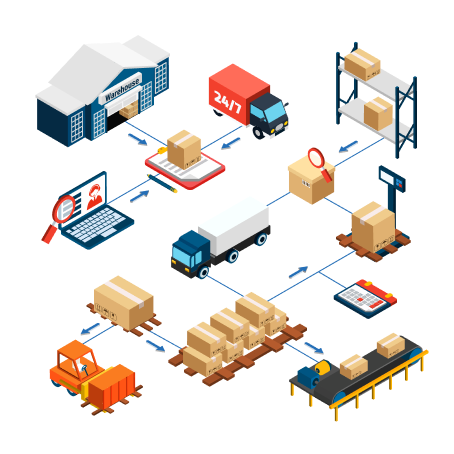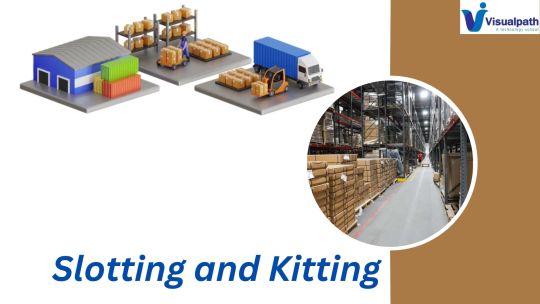#Dynamics Advanced Warehouse Management
Text

Dynamics 365 CRM Training Course
Visualpath is the best Dynamics 365 CRM Online Training Course in Hyderabad. We are providing Online Training classes by real-time faculty with real-time Projects. Call on - +91-9989971070.
WhatsApp: https://bit.ly/47eayBz
Visit: https://www.visualpath.in/microsoft-dynamics-crm-training.html
#dynamics 365 crm training course#dynamics crm online training#microsoft dynamics crm training#ms dynamics crm training#ms dynamics crm training in hyderabad#dynamics advanced warehouse management
0 notes
Text
0 notes
Note
What’s a more sweeter rivalry, mayuri being younger than kisuke, mayuri being the same age as kisuke, or mayuri being older than kisuke?
I feel like Kisuke being younger than Mayuri would skip straight past rivalry to a brutal murder suicide. One of the mainstays of Mayuri's rivalry with Kisuke is that he can always fall back on the other man being the most experienced.
His elation at 'beating' Kisuke with the Nemuri experiment partly comes from Mayuri doing something that Kisuke hasn't yet accomplished in his hundred's long tenure. Which is why I joke about his joy being a cope. 'Sure Kisuke has done so many brilliant things but finally I've done something he hasn't managed'. Like, it is essential that this pillar stay firm or his ego would fully shatter.
If Mayuri were the more experienced one yet still the lesser? A much different betrayal arc would be before us. Those vizards would not be living of their own volition in some warehouse, for sure.
That being said, I think there is potential for them being the same age/level of experience. A Kisuke who's less sure of himself and more reckless with his knowledge combined with a Mayuri who is only sure of Himself and Science, still without power or in the process of realizing his dream, would be interesting. Maybe (with the combined power of Hiyori) even enough to keep him from being a complete disaster emotionally. Could see an honest frenemy dynamic, even.
But the secret sauce imo is absolutely the dynamic we have. Mayuri constantly striving to prove that he deserves the positions lent him by Kisuke and further still, surpasses the man who gave them, is essential. The older and wiser Kisuke who's largest atrocities are behind him and has settled into a simpler life, one where he literally made children just so he could raise children (we never find any other explanation and he treats them like nothing more than kids), with his pseudo-competent shop husband and violent cat wife is essential.
To me, Kisuke has to be the more experienced and older man in the dynamic for Mayuri's accomplishments with Nemuri to ring so hollow. Nirvana is empty and the enlightened are too brand of hollow.
Like Mayuri truly believing he is the better man for emptying himself of all desires sans Discovery and Advancement hits even harder when you take into account that Kisuke (and Senjumaru) used a younger Mayuri to help build toward their goals. Kisuke is literally at a different level of his life both professionally and personally to the point where Mayuri was more tool than peer and to me that is a must. That is the seasoning. That’s what still simmers underneath Mayuri’s skin after all these years.
#Mayuri Kurotsuchi you’re my favorite fucking mess in this whole universe#No matter how hard he tries Kisuke could never contain so much neurosis#Kisuke tries to be a silly little guy#Mayuri tries hard not to be And Yet beneath the hostile veneer…..#is a love and curiosity that can’t be contained
12 notes
·
View notes
Text
Navigating the Cloud Landscape: Unleashing Amazon Web Services (AWS) Potential
In the ever-evolving tech landscape, businesses are in a constant quest for innovation, scalability, and operational optimization. Enter Amazon Web Services (AWS), a robust cloud computing juggernaut offering a versatile suite of services tailored to diverse business requirements. This blog explores the myriad applications of AWS across various sectors, providing a transformative journey through the cloud.

Harnessing Computational Agility with Amazon EC2
Central to the AWS ecosystem is Amazon EC2 (Elastic Compute Cloud), a pivotal player reshaping the cloud computing paradigm. Offering scalable virtual servers, EC2 empowers users to seamlessly run applications and manage computing resources. This adaptability enables businesses to dynamically adjust computational capacity, ensuring optimal performance and cost-effectiveness.
Redefining Storage Solutions
AWS addresses the critical need for scalable and secure storage through services such as Amazon S3 (Simple Storage Service) and Amazon EBS (Elastic Block Store). S3 acts as a dependable object storage solution for data backup, archiving, and content distribution. Meanwhile, EBS provides persistent block-level storage designed for EC2 instances, guaranteeing data integrity and accessibility.
Streamlined Database Management: Amazon RDS and DynamoDB
Database management undergoes a transformation with Amazon RDS, simplifying the setup, operation, and scaling of relational databases. Be it MySQL, PostgreSQL, or SQL Server, RDS provides a frictionless environment for managing diverse database workloads. For enthusiasts of NoSQL, Amazon DynamoDB steps in as a swift and flexible solution for document and key-value data storage.
Networking Mastery: Amazon VPC and Route 53
AWS empowers users to construct a virtual sanctuary for their resources through Amazon VPC (Virtual Private Cloud). This virtual network facilitates the launch of AWS resources within a user-defined space, enhancing security and control. Simultaneously, Amazon Route 53, a scalable DNS web service, ensures seamless routing of end-user requests to globally distributed endpoints.

Global Content Delivery Excellence with Amazon CloudFront
Amazon CloudFront emerges as a dynamic content delivery network (CDN) service, securely delivering data, videos, applications, and APIs on a global scale. This ensures low latency and high transfer speeds, elevating user experiences across diverse geographical locations.
AI and ML Prowess Unleashed
AWS propels businesses into the future with advanced machine learning and artificial intelligence services. Amazon SageMaker, a fully managed service, enables developers to rapidly build, train, and deploy machine learning models. Additionally, Amazon Rekognition provides sophisticated image and video analysis, supporting applications in facial recognition, object detection, and content moderation.
Big Data Mastery: Amazon Redshift and Athena
For organizations grappling with massive datasets, AWS offers Amazon Redshift, a fully managed data warehouse service. It facilitates the execution of complex queries on large datasets, empowering informed decision-making. Simultaneously, Amazon Athena allows users to analyze data in Amazon S3 using standard SQL queries, unlocking invaluable insights.
In conclusion, Amazon Web Services (AWS) stands as an all-encompassing cloud computing platform, empowering businesses to innovate, scale, and optimize operations. From adaptable compute power and secure storage solutions to cutting-edge AI and ML capabilities, AWS serves as a robust foundation for organizations navigating the digital frontier. Embrace the limitless potential of cloud computing with AWS – where innovation knows no bounds.
3 notes
·
View notes
Text
Optimizing Your Transfer Process for Faster Delivery Times: Insights from a Top Logistic Company in India
Introduction
In today's fast-paced business landscape, optimizing the transfer process is crucial for logistics companies aiming to provide faster delivery times. Efficient transfer processes not only enhance customer satisfaction but also contribute to overall operational excellence. In this blog, we will explore practical strategies to optimize your transfer process and improve delivery times, drawing insights from a Top Logistic Company in India.
1. Streamline Documentation and Tracking Systems
Implementing a streamlined documentation and tracking system is essential for efficient transfers. Digitize paperwork, invoices, and delivery notes to minimize manual errors and save time. Utilize advanced tracking technologies such as GPS, barcodes, or RFID to monitor and trace shipments throughout the transfer process accurately.
2. Optimal Warehouse Organization
An organized warehouse layout is key to expediting the transfer process. Implement efficient storage systems, such as bin locations, to ensure easy accessibility to goods. Utilize labeling and signage techniques to enhance visibility and minimize the time spent searching for specific items. Regularly review and update your inventory management system to prevent delays caused by inventory inaccuracies.
3. Embrace Automation and Technology
Integrating automation and technology can significantly accelerate transfer processes. Utilize automated sorting systems, conveyors, and robotics to streamline material handling and minimize manual intervention. Implement a robust transportation management system (TMS) to optimize route planning, load optimization, and real-time tracking. Utilize predictive analytics to anticipate demand patterns and proactively allocate resources.
4. Collaborate with Reliable Partners
Establishing strong partnerships with reliable suppliers, carriers, and logistics service providers is vital for efficient transfers. Choose partners known for their commitment to timely delivery, transparency, and operational excellence. Collaborate closely with them to align processes, share data, and jointly optimize the transfer process. Leverage their expertise and network to ensure seamless transfers.
5. Continuous Process Improvement
Regularly evaluate and refine your transfer processes to identify areas for improvement. Conduct data analysis to identify bottlenecks, delivery delays, and areas of inefficiency. Implement a continuous improvement framework such as Lean Six Sigma to drive process optimization and eliminate waste. Encourage employee involvement and feedback to foster a culture of innovation and improvement.
6. Conclusion
By implementing these optimization strategies, logistics companies can significantly improve transfer processes and achieve faster delivery times. Streamlining documentation, organizing warehouses efficiently, embracing automation and technology, collaborating with reliable partners, and fostering a culture of continuous improvement are key steps toward operational excellence. As a top logistics company in India, [Insert Top Logistic Company in India] has successfully implemented these strategies, resulting in faster delivery times and enhanced customer satisfaction. Adopting these practices can position your business for success in the dynamic logistics industry.
#Temperature Controlled Service Provider#Best Logistics Company in Indore#Best Logistic Company in India#Top Logistic Company in India#3PL Logistic Services in India#3PL Service Provider#3PL in India#Transfer Process for Faster Delivery#Faster Delivery Times
2 notes
·
View notes
Text
How does Microsoft Dynamics 365 Supply Chain Management System help businesses?
An efficient supply chain management demands effective risk management, and risk/agility KPIs in addition to the traditional KPIs of cost, service and quality. The key to achieving such management is the adoption of an automation tool like Microsoft Dynamics 365 Supply Chain Management (SCM) System.
Dynamics 365 SCM application provides the core competencies to address the challenges that businesses come across every day.
Microsoft Dynamics 365 Supply Chain Management provides businesses with a range of tools and capabilities to manage their supply chain operations. Here are some of the key features that are included in the Dynamics 365 SCM Services are:
Procurement: The system enables businesses to manage their purchasing processes, including supplier selection, purchase order creation, and invoice processing.
Inventory Management: Microsoft Dynamics 365 Supply Chain Management provides businesses with tools to optimize inventory levels and reduce carrying costs, including demand forecasting, inventory tracking, and reorder point calculation.
Production Planning: The system includes features for production scheduling, capacity planning, and resource management, helping businesses to optimize their manufacturing processes and improve efficiency.
Quality Control: Microsoft Dynamics 365 Supply Chain Management includes quality control tools to help businesses ensure that their products meet customer requirements and comply with regulatory standards.
Logistics Management: The system provides businesses with tools to manage their logistics operations, including transportation planning, route optimization, and warehouse management.
Analytics: Microsoft Dynamics 365 Supply Chain Management incorporates advanced analytics capabilities, including real-time dashboards and predictive analytics, to help businesses gain insights into their supply chain performance and make data-driven decisions.
Microsoft Dynamics 365 Supply Chain Management is a comprehensive platform that can help businesses streamline their supply chain operations, reduce costs, and improve efficiency.
2 notes
·
View notes
Text
Necessity of Software Development Company in Sydney for Business?
Hiring a customised software development company in Sydney becomes crucial for well-known businesses to keep a competitive edge and meet particular operational concerns.
They need personalised application development for custom software designed to automate corporate needs. Customised web or mobile phone applications can increase work efficiency and productivity. It can help in managing business data easily and streamline workflows.
Custom solutions, as compared to off-the-shelf software, can be tailored and scaled to grow with the company, providing better flexibility in addressing changing demands.
Necessity of Developing Custom Software and Applications in Sydney:
In Sydney, some well-established development companies offer the added advantage of understanding regional market dynamics and regulatory requirements.
They ensure clients that their experts develop tailor-made software based on individual business requirements that comply with local laws and standards.
Their proximity also allows for better communication, faster response times, and more effective collaboration, all of which are necessary for complex tasks.
Working with a reputable software development company increases security by creating bespoke systems less susceptible to common flaws in generic software.

Available Services from Trusted Companies for Software Development:
Well-known companies for software development in Sydney offer a comprehensive range of services to drive digital and application innovation. These include:
Application Development including web applications, iOS and Android applications.
Application migration and modernisation to enhance functionality and efficiency.
Containerisation to streamline application deployment.
UI/UX Design for intuitive and engaging user interfaces and experiences.
Data Platforms that enable scalable and secure data infrastructures.
Data Analytics and visualisation to turn available data into actionable insights through advanced analytics and visualisation tools.
Data Engineering and MLOps for engineering data solutions and operationalising machine learning models.
Data Science by applying scientific methods to extract knowledge from data.
Data Strategy and Consulting for effective data management and utilization.
Platform Engineering for designing and building resilient platforms.
Serverless Application Platforms to implement serverless architectures for scalable solutions.
Data Warehouse to create efficient data storage and Data Pipelines for processing them efficiently.
DevOps Automation for Automating development and operations processes.
Next-Generation Application Migration involves moving apps to next-generation platforms.
Meanwhile,trusted businesses must contact well-established companies for customised software and application development along with many other important specific strategies to innovate, improve user experiences, and retain growth in a deliberately competitive industry.
Source
0 notes
Text
Unleashing Data Potential with Keebo: A Comprehensive Guide to Services and Benefits
In the modern data-driven world, organizations constantly seek ways to optimize their data processing and analytics infrastructure. Keebo, a leader in this domain, provides advanced AI-driven solutions to enhance performance, reduce costs, and simplify data management. This blog delves into Keebo's offerings, focusing on how its services can transform data operations for businesses leveraging platforms like Snowflake.
Introduction to Keebo
Keebo is at the forefront of data optimization, employing artificial intelligence and machine learning to deliver automated solutions that significantly enhance data platform efficiency. Its primary aim is to help organizations maximize their data potential without the need for extensive manual intervention. Keebo's services are particularly valuable for enterprises using complex data platforms like Snowflake, enabling them to achieve superior performance and cost savings.

Keebo's Core Services
1. Snowflake Optimization
Keebo's Snowflake optimization service is designed to automatically fine-tune Snowflake environments. This service includes:
Dynamic Resource Management: Keebo adjusts warehouse sizes and resources based on real-time workload demands, ensuring optimal performance without waste.
Automated Query Optimization: The system analyzes and optimizes SQL queries, reducing execution time and improving efficiency.
Cost Control: By optimizing resources and queries, Keebo helps in substantially lowering operational costs.
2. Automated Data Engineering
Keebo simplifies data engineering through automation, which includes:
Data Pipeline Optimization: Automates the management and optimization of data pipelines, reducing the time and effort required for data integration and transformation.
Schema Evolution: Automatically adjusts and optimizes database schemas in response to changes in data and usage patterns.
3. Performance Monitoring and Analytics
Keebo offers robust performance monitoring tools that provide detailed analytics and insights:
Real-time Monitoring: Tracks performance metrics in real-time, allowing for immediate detection and resolution of issues.
Predictive Analytics: Utilizes machine learning to predict future performance bottlenecks and proactively address them.
4. AI-Driven Insights
Keebo leverages AI to deliver actionable insights that help organizations make informed decisions:
Usage Patterns Analysis: Analyzes user behavior and usage patterns to optimize data access and storage strategies.
Recommendation Engine: Provides recommendations for performance improvements and cost reductions based on historical data and trends.
Benefits of Using Keebo
Enhanced Performance
Keebo’s optimization services significantly enhance the performance of data platforms like Snowflake. By automatically adjusting resources and optimizing queries, Keebo ensures that data processes run efficiently and quickly.
Cost Efficiency
One of the standout benefits of Keebo is its ability to reduce costs. By fine-tuning resource allocation and minimizing wastage, Keebo helps organizations save on their cloud infrastructure expenses. The automated cost control mechanisms ensure that businesses only pay for what they actually use.
Simplified Data Management
Keebo’s automation capabilities simplify the management of complex data environments. This allows data engineers and analysts to focus on strategic tasks rather than routine maintenance and optimization, thereby improving productivity.
Proactive Issue Resolution
With real-time monitoring and predictive analytics, Keebo ensures that potential issues are identified and addressed before they can impact performance. This proactive approach helps maintain seamless data operations and minimizes downtime.
Actionable Insights
The AI-driven insights provided by Keebo empower organizations to make data-driven decisions. Whether it’s optimizing resource allocation or improving query performance, these insights lead to more effective and efficient data management practices.

Real-World Applications
Enterprise Data Warehousing
For large enterprises using Snowflake as their data warehouse, Keebo’s optimization services are invaluable. By automating resource management and query optimization, enterprises can handle larger volumes of data more efficiently and at a lower cost.
Business Intelligence
Organizations that rely heavily on business intelligence and analytics benefit from Keebo’s performance monitoring and AI-driven insights. Enhanced query performance and reduced processing times translate into faster and more reliable analytics, supporting better business decisions.
E-commerce
E-commerce platforms dealing with massive amounts of transaction and user data can leverage Keebo to optimize their data processing workflows. This leads to faster transaction processing, better customer insights, and ultimately, improved customer experiences.
Financial Services
In the financial sector, where data accuracy and speed are critical, Keebo ensures that data platforms run optimally. This helps financial institutions process transactions more quickly, analyze market trends in real-time, and maintain compliance with regulatory requirements.
Getting Started with Keebo
Easy Integration
Keebo is designed to integrate seamlessly with existing data platforms. Whether you’re using Snowflake or another data solution, Keebo’s services can be easily deployed without significant changes to your infrastructure.
User-Friendly Interface
Keebo provides an intuitive user interface that makes it easy for data engineers and analysts to navigate and utilize its features. Detailed dashboards and reporting tools provide clear visibility into performance metrics and optimization results.
Continuous Support
Keebo offers continuous support and updates to ensure that its optimization services remain effective as your data environment evolves. Regular updates and enhancements keep the platform aligned with the latest advancements in AI and machine learning.
Conclusion
In a world where data is a critical asset, optimizing data platforms for performance and cost efficiency is essential. Keebo’s AI-driven optimization services offer a comprehensive solution for organizations looking to enhance their data operations. By automating resource management, query optimization, and performance monitoring, Keebo not only improves efficiency but also delivers significant cost savings. Whether you’re an enterprise managing vast data warehouses or a business leveraging analytics for decision-making, Keebo’s services provide the tools needed to unlock the full potential of your data. Embrace the power of AI-driven optimization with Keebo and transform your data management practices for the better.
For more information, visit Keebo's website.
1 note
·
View note
Text
Revolutionize Your Business with MyHub Cloud Stores: The Future of Warehousing for Manufacturers and D2C Owners

In the dynamic world of manufacturing and direct-to-consumer (D2C) business, staying ahead of the curve is essential. One of the most significant advancements in this space is the concept of cloud-based warehousing. MyHub is at the forefront of this revolution, offering innovative solutions that transform traditional storage methods. This article explores the unparalleled benefits of MyHub’s Smart Cloud Stores, specifically focusing on the “warehouses for rent” and the secondary is “small warehouse for rent.”
The Evolution of Warehousing: A New Era
Traditional warehouses have long been a staple for businesses needing space to store products. However, the landscape is shifting towards more flexible, scalable solutions. MyHub’s Smart Cloud Stores represent this new era of warehousing, where technology meets practicality.
Why Choose MyHub Cloud Stores?
Scalability and Flexibility: Unlike conventional warehouses, MyHub’s cloud stores allow businesses to scale up or down based on their needs. This flexibility is particularly beneficial for small businesses looking for a “small warehouse for rent.”
Quick Activation: With MyHub, your products can be active at 40 locations within a single day. This rapid deployment is a game-changer for businesses looking to expand quickly without the logistical nightmare of setting up new warehouses.
Cost-Effective Solutions: Traditional warehouses often require long-term leases and substantial upfront costs. MyHub offers a more cost-effective solution with its pay-as-you-go model, making it an attractive option for both large manufacturers and small D2C brands.
The Cloud Store Model: Unleashing Potential
The cloud store model is not just a trend; it’s a revolution in the making. Here’s why:
Efficiency: Streamline your operations by managing inventory, sales, and distribution from a single platform. MyHub’s Smart Cloud integrates seamlessly with existing systems, ensuring minimal disruption and maximum efficiency.
Accessibility: Managing your warehouse is as simple as booking a movie ticket. Select your Smart Cloud Store, check availability, book your slot, input your product, and you’re ready to sell. This user-friendly approach democratizes access to top-tier warehousing solutions.
Enhanced Sales Opportunities: By activating products across multiple locations swiftly, businesses can tap into new markets and customer bases, driving sales and growth. The potential for increased sales is significant, especially for D2C brands looking to make a mark.
Smart Cloud: The Only Solution You Need
For manufacturers and D2C owners, the Smart Cloud is more than just a storage solution; it’s a strategic advantage. It offers:
Unmatched Reach: Within a single day, your products can be available at 40 different locations, giving you unprecedented market reach.
Real-Time Management: Monitor and manage your inventory in real-time, ensuring that you can respond to market demands swiftly and efficiently.
Sustainable Practices: By optimizing space and resources, Smart Cloud stores promote sustainability, reducing the carbon footprint associated with traditional warehousing.
Join the Revolution
The future of warehousing is here, and it’s in the cloud. MyHub’s Smart Cloud Stores are designed to cater to the needs of modern businesses, offering flexibility, efficiency, and scalability. Whether you’re a large manufacturer or a small D2C brand looking for a “small warehouse for rent,” MyHub has the perfect solution for you.
So, what are you waiting for? Join the revolution and transform your business with MyHub. Log into MyHub.in today and take the first step towards a smarter, more efficient future. Booking your Smart Cloud Store is as easy as selecting a location, checking availability, booking your slot, inputting your product, and launching your sales. Increase your sales potential and streamline your operations with MyHub’s innovative cloud store model.
In conclusion, MyHub’s Smart Cloud Stores are set to revolutionize the warehousing industry. With unmatched flexibility, scalability, and efficiency, they offer a viable and superior alternative to traditional warehouses. Embrace the future, enhance your business operations, and watch your sales soar with MyHub.
#WarehousesForRent#SmallWarehouseForRent#MyHubCloudStore#SmartCloudWarehousing#FlexibleWarehousing#CloudStorageSolutions#RevolutionaryWarehousing#EfficientStorage#BusinessExpansion#D2CStorageSolutions#ManufacturingStorage#ScalableWarehousing#InnovativeWarehousing#SmartStorage#RapidDeployment#CostEffectiveStorage#MarketExpansion#LogisticsRevolution#SupplyChainInnovation#FutureOfWarehousing
0 notes
Text

Dynamics CRM with Power Apps Online Training New Batch
Join Now: https://bit.ly/3vNyG0K
Attend an Online #newbatch On #dynamicscrm with #PowerApps by Mr. Venkat.
Batch on: 4th April @ 8:00 AM (IST).
Contact us: +91 9989971070.
Join us on WhatsApp: https://bit.ly/47eayBz
Visit: https://www.visualpath.in/microsoft-dynamics-crm-training.html
#dynamics 365 crm training course#dynamics crm online training#microsoft dynamics crm training#ms dynamics crm training#ms dynamics crm training in hyderabad#dynamics advanced warehouse management
0 notes
Text
Advanced Warehouse Management - Hyderabad
What is Slotting and Kitting in Advance Warehouse
Advanced warehouse management, slotting, and kitting are two interconnected strategies that aim to optimize efficiency and accuracy within your warehouse. Here's a breakdown of each
Warehouse Management Courses Online
Slotting:
Definition: Slotting refers to the strategic placement of inventory within a warehouse. It involves analyzing various factors like product size, weight, demand, and picking frequency to determine the optimal location for each item.
Benefits:

Reduced picking time: By placing frequently picked items in easily accessible locations, pickers can navigate the warehouse faster, leading to increased productivity and order fulfillment speed.
- Advanced Warehouse Management in Dynamics 365
Improved space utilization: Utilizing the available warehouse space efficiently reduces storage costs and allows for better organization.
Enhanced accuracy: Placing similar or compatible items together minimizes picking errors and ensures correct order fulfillment.
Advanced techniques:
ABC analysis: Classifies items based on their demand and value, helping prioritize slotting decisions.
Dynamic slotting: Adjusts item placement based on real-time inventory levels and demand fluctuations.
Kitting:
Definition: Kitting involves pre-assembling groups of items that are often ordered together. This can include components for a finished product, promotional bundles, or sets of frequently ordered items.
- Advanced Warehouse Management Training
Benefits:
Faster order fulfillment: Pre-assembled kits reduce picking time and streamline the order fulfillment process.
Reduced picking errors: Minimizes picking mistakes by ensuring all necessary components are included in the kit.
Improved inventory control: Easier to track and manage kitted items as a single unit. - Advanced Warehouse Management Training Course
Advanced techniques:
Kit-to-order: Assemble kits only when an order is placed, reducing inventory carrying costs.
Automated kitting: Utilize automated systems for faster and more accurate kit assembly.
Combined impact:
By implementing both slotting and kitting strategies together, advanced warehouses can achieve significant improvements in efficiency, accuracy, and cost savings.
Visualpath is the Leading and Best Software Online Training Institute in Ameerpet, Hyderabad. Avail complete job-oriented Advanced Warehouse Management Training by simply enrolling in our institute in Ameerpet, Hyderabad. You will get the best course at an affordable cost.
Attend Free Demo
Call on - +91-9989971070.
WhatsApp: https://www.whatsapp.com/catalog/919989971070
Visit: https://www.visualpath.in/advanced-warehouse-management-course.html
#Warehouse Management Courses Online#Advanced Warehouse Management Training#Advanced Warehouse Management Course#Advanced Warehouse Management Online Training#Advanced Warehouse Management#Advanced Warehouse Management Training Course#Dynamics Advanced Warehouse Management#Advanced Warehouse Management in Dynamics 365
0 notes
Text
The Role of Ecommerce Fulfillment Services in International Courier Shipping
The rapid expansion of ecommerce has revolutionized global trade, making it easier for businesses to reach customers across the world. Central to this evolution is the efficiency of ecommerce fulfillment services, which ensure that products ordered online are picked, packed, and shipped to customers swiftly and accurately. This article delves into the critical role that ecommerce fulfillment services play in international courier shipping, with a particular focus on the best courier service in India and International courier service in Mumbai, and the dynamics of shipping from India to USA.
The Importance of Ecommerce Fulfillment Services
Ecommerce fulfillment services encompass a range of processes from inventory management to order processing and shipping. These services are crucial for maintaining customer satisfaction by ensuring timely and accurate deliveries. Efficient ecommerce fulfillment services can significantly enhance a business's operational efficiency and customer service quality.
Best Courier Service in India: Key Players
India boasts a competitive landscape of courier services, each vying to be recognized as the best courier service in India. These services are pivotal for businesses looking to ship products domestically and internationally. Companies like Blue Dart, DTDC, and Delhivery are often highlighted for their robust networks and reliable services. These couriers not only handle the logistics of shipping from India to USA but also manage local deliveries with equal proficiency.
International Courier Service in Mumbai
Mumbai, as a major commercial hub, plays a vital role in international trade. An International courier service in Mumbai acts as a critical link for businesses looking to expand their global reach. Companies operating in Mumbai, such as FedEx, DHL, and UPS, provide specialized services tailored to meet the needs of international shipments. These services ensure that packages are delivered on time and in perfect condition, whether the destination is across the state or across the world.
Shipping from India to USA: Challenges and Solutions
Shipping from India to USA presents unique challenges, including customs clearance, regulatory compliance, and logistical complexities. The key to overcoming these challenges lies in partnering with the best courier service in India and leveraging comprehensive ecommerce fulfillment services. Efficient handling of documentation, real-time tracking, and robust customer support are essential features that facilitate smooth international shipping.
The Role of Technology in Ecommerce Fulfillment
Technology is a game-changer in the realm of ecommerce fulfillment services. Advanced warehouse management systems (WMS), automated picking and packing solutions, and integrated shipping platforms streamline operations and reduce the likelihood of errors. These technological advancements enable the best courier service in India and International courier service in Mumbai to offer unparalleled service quality.
Selecting the Right Courier and Fulfillment Partner
Choosing the right partner for ecommerce fulfillment services and international shipping is crucial for business success. Here are some factors to consider:
Reliability and Reputation: Look for providers known for their reliability and positive customer reviews. The best courier service in India should have a proven track record of timely and secure deliveries.
Coverage and Reach: Ensure that the courier service has a wide network and can handle shipping from India to USA seamlessly. An International courier service in Mumbai with extensive global reach can be highly beneficial.
Technology Integration: Opt for partners that use advanced technology to enhance efficiency. Real-time tracking, automated notifications, and seamless integration with your ecommerce platform are vital features.
Customer Support: Excellent customer service is essential for addressing any issues that arise during the shipping process. Choose a partner that offers robust support to resolve any problems quickly.
Conclusion
In conclusion, ecommerce fulfillment services play an indispensable role in the success of international courier shipping. By partnering with the best courier service in India and leveraging the capabilities of an International courier service in Mumbai, businesses can ensure efficient shipping from India to USA. The right combination of technology, reliable partners, and robust fulfillment processes can transform global shipping challenges into competitive advantages, helping businesses thrive in the global marketplace.
#best courier service in india#International courier service in mumbai#ecommerce fulfillment services#shipping from India to USA
0 notes
Text
B2B Fulfillment: The Backbone of Business Operations in the USA
As observed, the B2B trading environment is characterized by high and complex dynamics, which makes fulfillment center in USA a crucial component. A US-based fulfillment center is required to store, manage and dispatch inventory, and is thus an integral aspect of a wide range of industries.
The Role of a B2B Fulfillment Center
A B2B fulfillment center is specifically focused on the delivery of bulk products meant for other companies rather than end users. These centers are capable of handling big volumes, handling inventory of many items within a company and moving goods through a facility’s supply chain.
While B2C activities may involve standard orders, value-added packing, and handling services in general, B2B transactions are usually orders on a bigger scale, which these centres excel in.
Benefits of Using a USA Fulfillment Center
1. Operational Efficiency: The B2B fulfillment centers are set to process the larger quantity of products in a short time so that the large orders are met without any delay. This leads to efficiency in the delivery time which is very important in every business to carry out its activities and meet the needs of its clients.
2. Cost Reduction: Successful outsourcing of the company’s operations to a fulfillment center is acknowledged to have many net advantages, including cost-saving. A few ways, whereby businesses can minimize general and administration expenses include cutting down on costs of warehousing; and the costs of staffing and sometimes, the costs of getting products to the intended destinations.
3. Advanced Technology: These depots bear many similarities to typical warehouses, although they employ modern equipment and advanced technology both for handling equipment and inventory control. This particular technology facilitates accuracy in order processing, and inventory management and facilitates an efficient supply of products in the market.
4. Focus on Core Activities: In this sense, decentralized warehouse strategies allow firms not to divert their efforts in the areas they are skilled at, like product design, sale and promotion, and client relations.
5. Improved Customer Experience: A smooth and efficient USA fulfillment center increases order delivery time and reduces the time between an order being placed and when it is delivered to the customer increasing their satisfaction and loyalty.
For original post visit: https://hightechlogistics.blogspot.com/2024/06/b2b-fulfillment-backbone-of-business.html
0 notes
Text
Freight Forwarders in India - Navigating Growth by Shaping India's Logistics Landscape
In the past five years, India has emerged as the world's fastest-growing major economy, driven by a surge in demand for goods and services. This economic momentum is significantly attributed to the freight forwarders of the country.
Currently, the logistics sector accounts for five percent of India's Gross Domestic Product (GDP) and employs 2.2 crore people. The country handles a staggering 4.6 billion tonnes of goods annually, incurring a total annual cost of INR 9.5 lakh crore. These goods encompass various domestic industries, with 22 percent being agricultural products, 39 percent mining goods, and another 39 percent comprising manufacturing-related commodities. The majority of these goods are transported by trucks and other vehicles, while railways, coastal and inland waterways, pipelines, and airways contribute to the rest.
India's freight transport system assumes a crucial role in supporting the country's ambitious priorities. Freight Forwarders have a significant role in India’s growth. Let’s explore their significance and how they are contributing to India’s growing economy.
Freight Forwarders in India
Fostering Skill Advancement to Boost Employment
The burgeoning freight forwarding services sector in India is a catalyst for positive shifts in employment and skill development. Opportunities within the dynamic logistics and transportation domains span diverse roles, from truck drivers and warehouse operation managers to logistics coordinators and supply chain heads. This job creation propels economic advancement and empowers individuals nationwide.
Furthermore, the expanding realm of freight forwarders in India necessitates a focus on skill development. Recognizing this imperative, freight forwarders have come up with diverse training programs and skill enhancement initiatives to equip individuals with the requisite knowledge and proficiency to thrive in the logistics industry. Skill development aids nurture entrepreneurship and empowers individuals to establish their own successful logistics ventures, contributing further to the sector's growth.
Fueling Industrial Advancement and Boosting Manufacturing
Freight forwarders in India play a pivotal role in propelling industrial development and bolstering manufacturing sectors in India. By ensuring the prompt delivery of raw materials, equipment, and components, freight forwarders uphold the uninterrupted operation of production lines across various industries including automobile, textile, electronics, pharma, etc.
Furthermore, freight forwarders are instrumental in nurturing the expansion of industrial clusters and Special Economic Zones (SEZs). These zones provide an optimal environment for manufacturing activities, attracting both domestic and foreign investments. By establishing seamless connectivity between these industrial hubs and global markets, freight forwarders facilitate businesses in efficiently importing raw materials and exporting finished products, thereby fostering industrial development and driving economic progress.
Boosting Supply Chain Efficiency and Affordability
Freight forwarders in India actively strive to achieve supply chain efficiency by harnessing cutting-edge technologies like artificial intelligence, tracking systems, and the Internet of Things (IoT). Freight Forwarders render complete work transparency through real-time visibility for shipment tracking. This empowers businesses to make data-driven decisions, minimize disruptions, and enhance overall supply chain management.
Moreover, freight forwarders conveniently reduce operation costs and heighten cost-effectiveness by creating a synergy between businesses and logistics operations. Leveraging expertise in route optimization, consolidation, and warehousing, freight forwarders assist businesses in streamlining their logistics processes, thus enhancing operational efficiency. This, in turn, contributes to heightened competitiveness and fosters economic growth.
Enhancing Infrastructure and Streamlining Connectivity
The development of a resilient logistics infrastructure plays an imperative role in optimizing supply chain management and facilitating the smooth movement of freight. Freight forwarders in India actively contribute to this goal by prioritizing improvements in transportation networks like ports, airports, and roadways. Strategic investments in these key areas result in optimized connectivity, decreased transportation expenses, and shorter transit durations. A strategically designed infrastructure encourages the adoption of multimodal logistics. By seamlessly integrating various modes of transport, including air, road, and sea, freight forwarders empower businesses to achieve cost-efficient and swift movement of goods globally. The final integration of different modes of multimodal logistics not only elevates India’s competitiveness globally but allows businesses to capitalize on various transportation options, thereby fortifying the economy.
In conclusion, the role offreight forwarders in India is indispensable in shaping India's logistics landscape. As the country continues to witness economic growth and global integration, the efficiency and effectiveness of freight forwarding services become paramount. Jeena and Company, with its 120-year legacy, exemplifies the resilience and adaptability required to thrive in this dynamic industry. Our ability to navigate challenges, leverage technology, and foster strong global partnerships has contributed significantly to the growth and development of India's logistics landscape.
To Know More: https://jeena.com/blog-read.php?slug=freight-forwarders-in-india---navigating-growth-by-shaping-india-s-logistics-landscape-

0 notes
Text
Trends in Furniture Logistics: CG Logistics’ Insights and Solutions
The furniture industry is undergoing significant transformations, driven by evolving consumer preferences, technological advancements, and the rise of e-commerce. These changes have a profound impact on furniture logistics, necessitating innovative solutions to manage supply chain complexities efficiently. CG Logistics, with its deep industry expertise, offers strategic insights and solutions to optimize operations in this dynamic environment.
Current Trends in Furniture Logistics
E-Commerce and Direct-to-Consumer Sales
The surge in e-commerce has dramatically altered the landscape of furniture logistics. Consumers increasingly prefer to shop online, expecting quick and hassle-free delivery of bulky items like furniture.
– Impact: This shift requires logistics providers to manage smaller, more frequent shipments directly to consumers, rather than large bulk shipments to retail stores. It also necessitates efficient last-mile delivery solutions to meet customer expectations for speed and convenience.
Customization and Personalization
Consumers are seeking more personalized and customizable furniture options, driving manufacturers to offer made-to-order products.
– Impact: This trend introduces additional complexity into the supply chain, as logistics providers must handle unique, individualized orders rather than standardized products. It also requires flexibility in warehousing and inventory management to accommodate a wide variety of items.
Sustainability and Eco-Friendly Practices
Sustainability is becoming a crucial consideration for both consumers and businesses. There is a growing demand for eco-friendly products and sustainable logistics practices.
– Impact: Logistics providers are under pressure to reduce their carbon footprint, adopt green packaging solutions, and implement sustainable transportation methods. This trend also emphasizes the importance of reverse logistics for recycling and returns.
Technological Integration
Advancements in technology, including IoT, AI, and blockchain, are transforming furniture logistics by improving efficiency, transparency, and customer satisfaction.
– Impact: Technology enables real-time tracking, predictive analytics for demand forecasting, and enhanced inventory management. These capabilities help logistics providers optimize their operations and respond swiftly to market changes.
Urbanization and Changing Living Spaces
Increasing urbanization and the trend toward smaller living spaces influence the types of furniture being purchased, favoring compact and multifunctional designs.
– Impact: Logistics providers must adapt to the changing dimensions and configurations of furniture, requiring more flexible warehousing solutions and specialized handling techniques to manage diverse product ranges.
CG Logistics’ Strategies for Optimizing Furniture Logistics
CG Logistics leverages its extensive experience and innovative solutions to address the challenges and opportunities presented by these trends. Here are some of the key strategies employed by CG Logistics to optimize supply chain operations in the furniture industry:
Advanced Warehouse Management
Effective warehousing is critical for managing the diverse and bulky nature of furniture products.
– Flexible Storage Solutions: CG Logistics offers scalable storage options to accommodate varying inventory levels, from bulk items to customized pieces. Their warehouses are equipped to handle large items efficiently, ensuring optimal space utilization.
– Smart Warehousing Technology: By integrating IoT and AI, CG Logistics enhances visibility and control over inventory. Real-time data on stock levels, movement, and condition helps in reducing lead times and improving order accuracy.
Efficient Last-Mile Delivery
Last-mile delivery is crucial for customer satisfaction in the furniture industry, given the size and weight of the products.
– Optimized Routing and Scheduling: CG Logistics uses advanced routing algorithms to optimize delivery routes, minimizing transit times and costs. Flexible scheduling options allow customers to choose delivery windows that suit their convenience.
– White-Glove Services: Offering premium delivery services, including assembly and installation, CG Logistics ensures a seamless customer experience. This is particularly important for high-value and complex furniture items.
Sustainable Practices
Sustainability is a key focus for CG Logistics, aligning with the growing consumer demand for eco-friendly solutions.
– Green Transportation: CG Logistics invests in fuel-efficient vehicles and explores alternative energy sources to reduce emissions. Their commitment to sustainable logistics practices helps in minimizing the environmental impact.
– Eco-Friendly Packaging: Utilizing recyclable and biodegradable materials, CG Logistics ensures that packaging is both protective and sustainable. This approach reduces waste and promotes environmental responsibility.
Technology-Driven Solutions
Embracing technology is central to CG Logistics‘ strategy for enhancing efficiency and transparency in furniture logistics.
– Real-Time Tracking and Monitoring: Advanced tracking systems provide real-time updates on the status and location of shipments, offering peace of mind to customers and enabling proactive management of potential issues.
– Predictive Analytics: AI-driven analytics tools help in forecasting demand and optimizing inventory levels. This reduces the risk of stockouts and overstock situations, ensuring that the right products are available when needed.
Customization and Personalization
CG Logistics recognizes the importance of flexibility in handling personalized furniture orders.
– Tailored Logistics Solutions: By offering customizable logistics solutions, CG Logistics caters to the unique requirements of each client, whether it’s handling bespoke orders or managing complex delivery schedules.
– Agile Supply Chain Management: Their agile approach to supply chain management allows for quick adjustments to changing market demands, ensuring that customers receive their customized products promptly.
Conclusion
The furniture logistics landscape is evolving rapidly, driven by trends such as e-commerce growth, customization demands, sustainability, technological advancements, and urbanization. CG Logistics is at the forefront of addressing these trends with innovative strategies that optimize supply chain operations.
#Logistics companies in Mumbai#Logistics companies in Chennai#Logistics companies in Dubai#Logistics companies in Singapore
0 notes
Text
From Plans to Reality: The Australian Building & Construction Industry Explained
Australia's building and construction industry stands as a testament to the nation's growth and development. With its booming cities and diverse landscapes, Australia's built environment is a dynamic blend of tradition and innovation. In this blog, we delve into the intricacies of the Australian building and construction sector, exploring its key components, challenges, and future prospects.

The Landscape of Australian Construction:
The Australian construction industry is vast and multifaceted, encompassing residential, commercial, industrial, and infrastructure projects. From towering skyscrapers in urban centers to sprawling residential developments in suburban areas, the industry caters to diverse needs and demands.
Residential Construction:
Residential construction plays a pivotal role in Australia's building sector, driven by population growth, urbanisation, and changing demographics. The demand for housing continues to soar, particularly in major cities like Sydney, Melbourne, and Brisbane. However, challenges such as affordability, sustainability, and regulatory constraints pose significant hurdles for developers and homebuyers alike.
Commercial and Industrial Construction:
Australia's commercial and industrial construction sectors are thriving, fueled by business expansion, technological advancements, and evolving consumer preferences. From office towers and shopping centers to warehouses and manufacturing facilities, these projects shape the urban landscape and drive economic growth. However, market fluctuations, lease dynamics, and infrastructure limitations can impact the sector's growth trajectory.
Infrastructure Development:
Infrastructure development is a priority for the Australian government, aimed at enhancing connectivity, productivity, and quality of life. Major projects such as roadways, railways, airports, and ports are vital for facilitating trade, fostering regional development, and addressing urban congestion. Despite the economic benefits, infrastructure projects often face challenges related to funding, planning, and stakeholder coordination.
Key Players in the Industry:
The Australian building and construction industry comprises a diverse ecosystem of stakeholders, including developers, contractors, architects, engineers, suppliers, and regulators. Collaboration among these entities is essential for delivering successful projects that meet quality, safety, and sustainability standards. Moreover, the industry's workforce plays a crucial role, with skilled labor shortages posing a persistent challenge.
Regulatory Framework:
Australia's building and construction sector is subject to a complex regulatory framework aimed at ensuring safety, quality, and compliance. Various laws, codes, and standards govern different aspects of the industry, covering building design, construction techniques, environmental impact, and occupational health and safety. Navigating these regulations requires careful planning, expertise, and ongoing compliance management.
Challenges Facing the Industry:
Despite its resilience and adaptability, the Australian building and construction industry faces several challenges that impact its growth and sustainability. These include:
Economic Uncertainty: Fluctuations in economic conditions, including interest rates, inflation, and consumer confidence, can affect investment decisions and project viability.
Regulatory Compliance: Meeting regulatory requirements adds complexity and cost to projects, with compliance failures leading to legal, financial, and reputational risks.
Sustainability Imperatives: Increasing emphasis on sustainability, energy efficiency, and carbon reduction necessitates innovative design and construction practices, which may require upfront investment and expertise.
Supply Chain Disruptions: Global events, trade tensions, and supply chain disruptions can impact the availability and cost of construction materials, delaying project timelines and increasing costs.
Skilled Labor Shortages: The shortage of skilled labor, exacerbated by demographic trends and industry perceptions, poses a significant challenge for meeting project demand and maintaining quality standards.
Future Outlook:
Despite the challenges, the Australian building and construction industry remains resilient and adaptive, driven by innovation, technology adoption, and market demand. As the nation continues to grow and evolve, the industry will play a vital role in shaping the built environment, driving economic prosperity, and enhancing quality of life.
Key trends shaping the future of the industry include:
Digital Transformation: The adoption of digital technologies, such as Building Information Modeling (BIM), drones, and IoT sensors, is revolutionising project delivery, improving efficiency, and enabling data-driven decision-making.
Prefabrication and Modular Construction: Offsite construction methods are gaining traction, offering faster, more cost-effective, and sustainable alternatives to traditional building techniques.
Sustainable Practices: Green building practices, renewable energy integration, and circular economy principles are becoming mainstream, driven by regulatory mandates, market demand, and environmental imperatives.
Collaboration and Integration: Integrated project delivery models, collaborative partnerships, and stakeholder engagement are essential for overcoming industry fragmentation and delivering successful outcomes.
Conclusion:
The Australian building and construction industry is a dynamic and resilient sector that plays a crucial role in shaping the nation's built environment. Despite facing various challenges, including economic uncertainty, regulatory complexity, and skilled labor shortages, the industry continues to innovate and adapt to meet evolving market demands. By embracing digital transformation, sustainability, and collaboration, the industry is poised for growth and success in the years to come.
0 notes